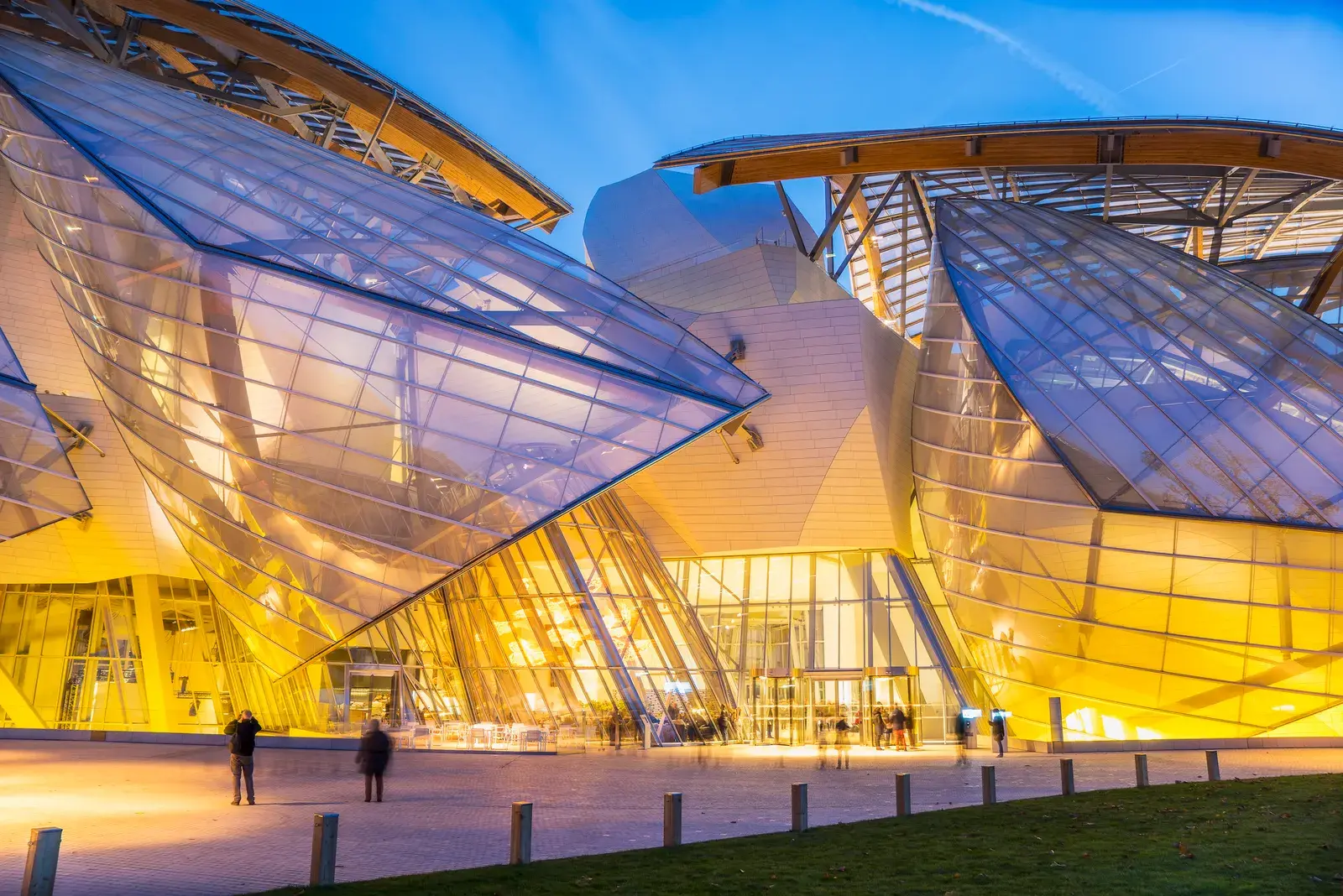Gothic Architecture: Key Characteristics, History, & Examples
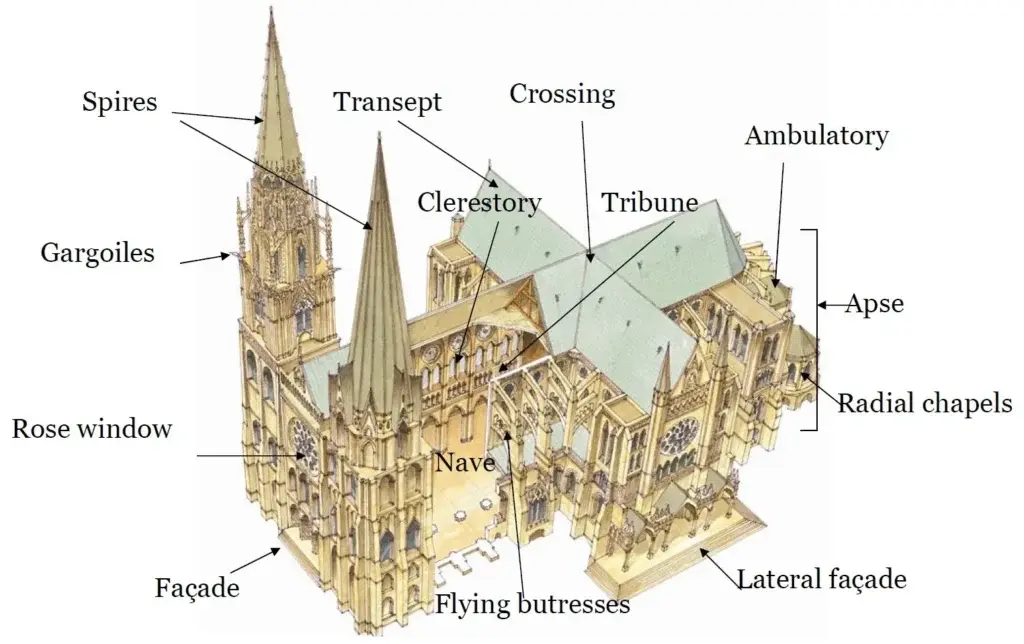
Table of Contents
Prevailing from the sea of unconventional architecture, the era of Gothic was yet another movement that ushered in modern design. Emerging in Europe during the late 12th to 16th centuries, the era underwent a paradigm shift from Romanesque to resurfacing in Renaissance style. Underlining ornamentation and conceptualisation, Gothic architecture became an influential movement. The distinctive character of this genre continues to stay prevalent from the Middle Ages.
For as distinctive and inspiring as the era was, our blog enlists all that there is to know about Gothic Architecture, its origin, key features, prominent Gothic buildings and their architects. So, without any further ado, let us deck ourselves with the beauty of Gothic architecture and its journey.
What is Gothic-style architecture?
Gothic architecture emerges from European styles flaunting their mediaeval character featuring high ceilings, intricate ornamentation, vaults, pointed arches, flying buttresses, stained glass, and windows, etc. Often found draped around cathedrals, churches, etc, this architectural style dangles an elaborate character and has stirred a European influence.
The Origin and Development of Gothic Architecture
Let's rewind the conversation and backtrack to the era of revolts, revolutions, the birth of unconventional movements, princesses, and knights, or as we date it, the mediaeval era.
Amidst all the fire and uncanny sights, there was the emergence of a period that worshipped the grotesque. Initially referred to as the Opus Francigenum or French work, the urban fabric was about to be hit by a dominant European influence from the aesthetic of Roman Catholic churches. It was only until the 16th century that it was titled "Gothic". Evolving from Romanesque architecture, this medieval aesthetic features vaulted ceilings, exaggerated arches, flamboyant windows, and pointed arches, alongwith appreciated humongous scales and grandeur. However, there was one thing different.
Abandoning the adaptation of thicker walls, Gothic architecture features a framework employing flying buttresses, defying the conventional laws of structural reinforcement. The designers advocating for this style chose thinner walls and touched newer skylines with the urban context. The use of stone structures allowed the Gothic architecture architects of the time to evoke ethereality in magnificence and form purposeful characters. Originating in the early 12th century in Northwest England and France, the Gothic Era further expanded to Latin Europe in the 13th century. By the 1300s, this architectural style had become the pioneer of an international style that emerged from conventional urban communication and design.
Also Read: The Powerful Influence of Colonization in India: History and Architecture
Gothic Architecture Characteristics
The Gothic architecture characteristics might vary according to multiple factors including age, type, and location of the structure, but it lists down to a few key Gothic Architecture elements.
1. Pointed arches
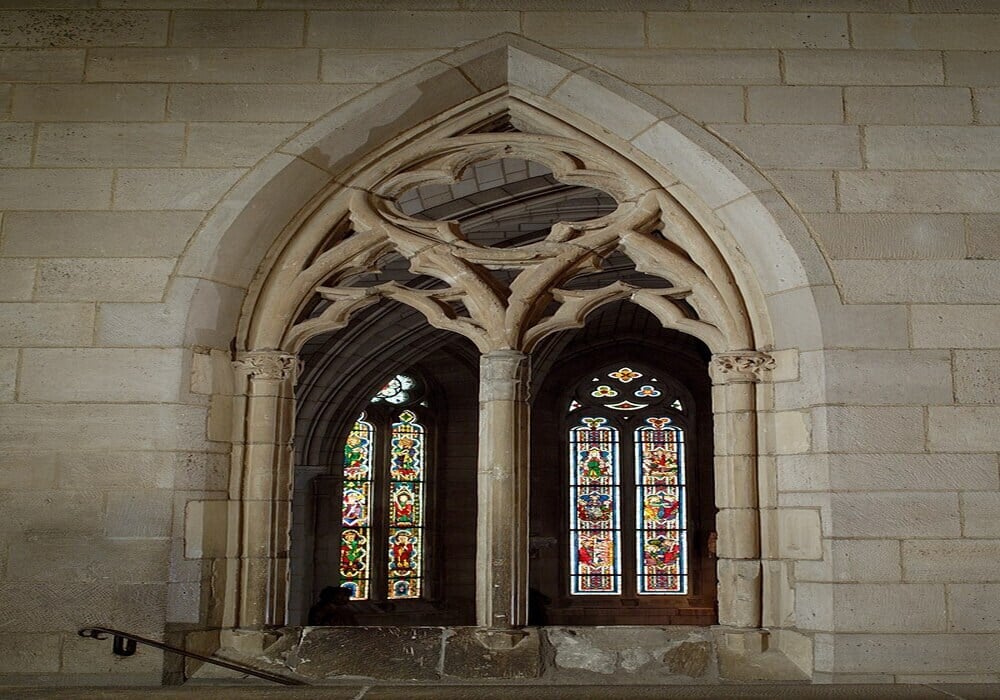
One of the most renowned features of Gothic Architecture includes pointed arches. The design of this arch effectively distributes the weight of the walls as compared to round arches being used previously. This led to the elongation of the arches in Gothic architecture that we cannot stop admiring.
2. Flying Buttresses
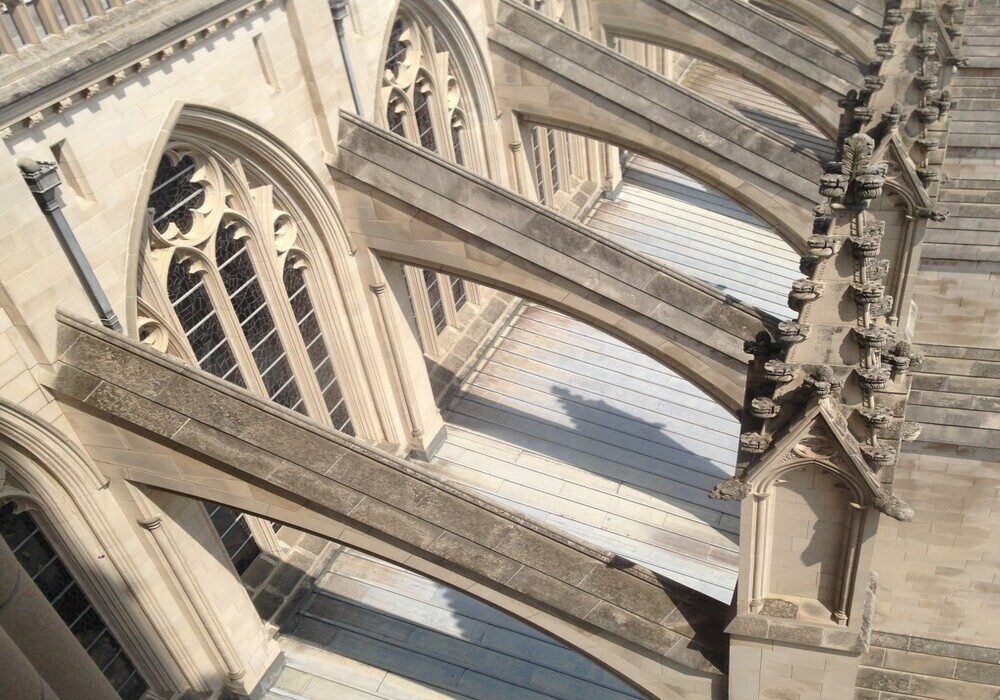
Often incorporated with arches of varying sizes connecting to different structural levels, Gothic architecture shapeshifted towards flying buttresses. With flying buttresses in the structure, the Gothic architecture architects and designers were able to expand the construction scope without using thick walls.
3. Ribbed Vaults
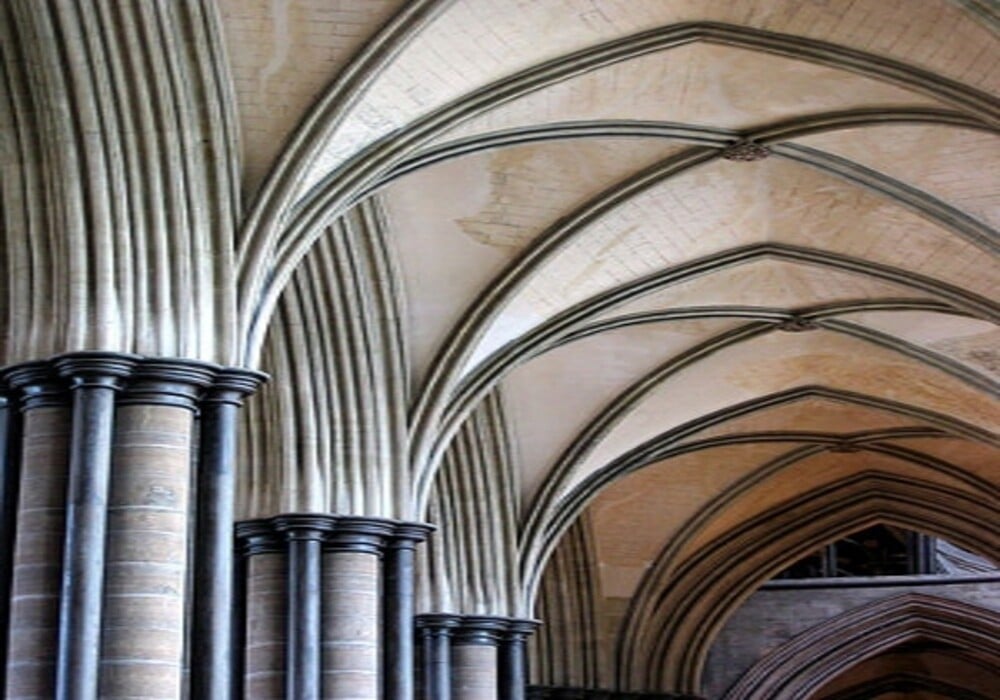
One of the primary structural Gothic Architecture elements were the ribbed vaults that not only widened the possibility of installing taller windows but also distributed the strain of its weight downwards by its diagonal cross-section. The concept of rib vaulting involves intersecting barrel vaults positioned in an array to support the roof.
4. Stained glass windows
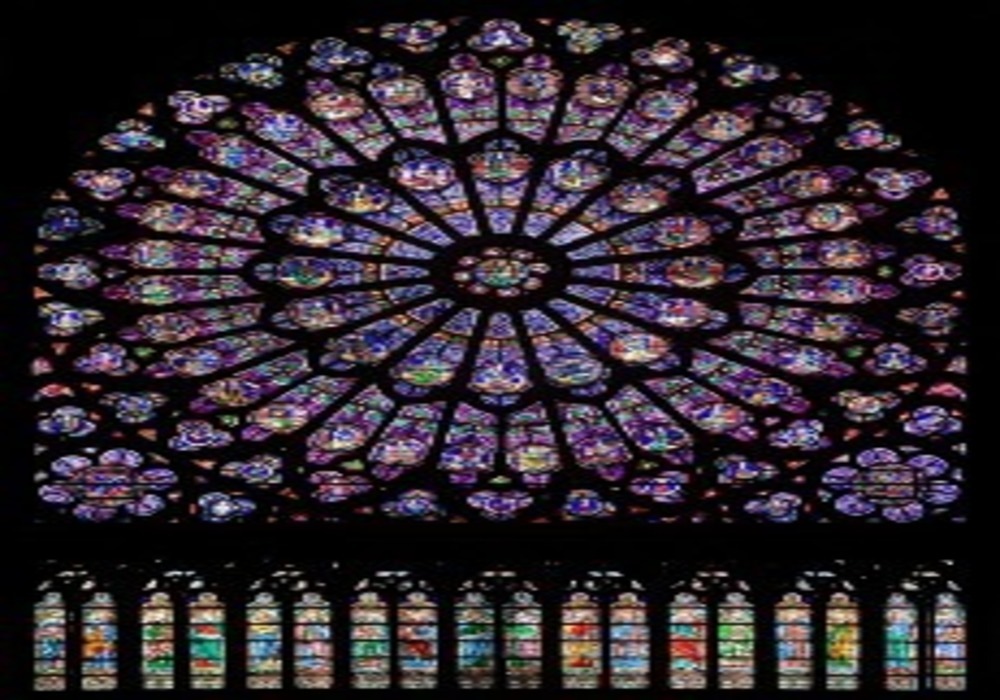
Gothic cathedrals often lead you to kaleidoscopic landscapes through their stained glass windows. Adorned on the Gothic building envelope as a lancet or rose design, these windows let in flamboyance like none other. Crafted from the tales of Biblical novellas, these windows add a decorative character to the elevation as well as the interiors.
5. Ornamentation
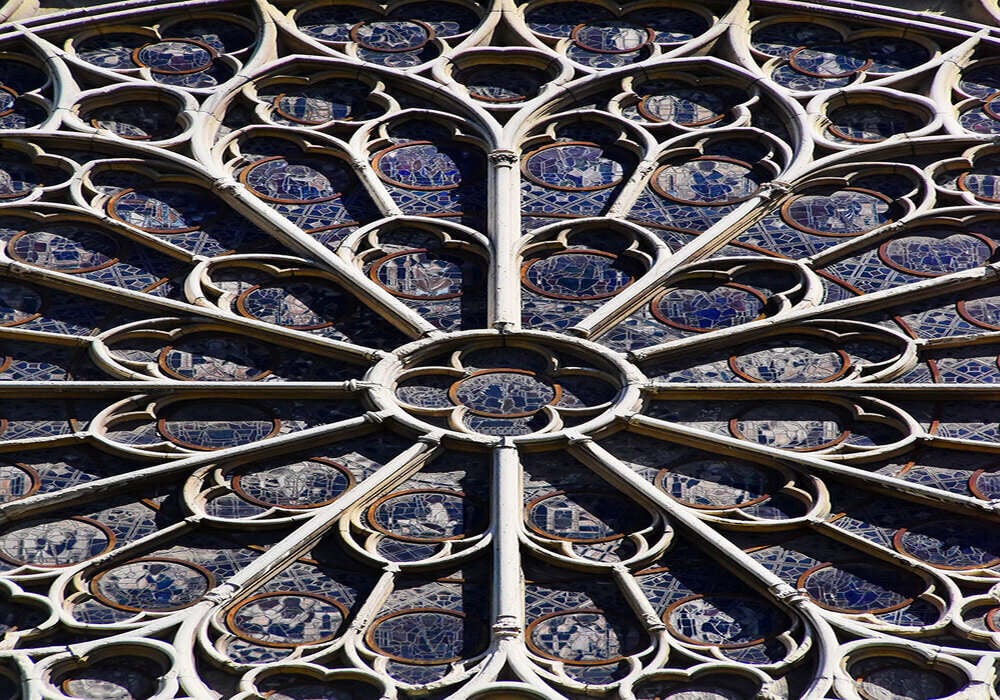
It is almost impossible to think of Gothic architecture and not talk about the dominance of ornamentation. Gothic architecture buildings featured colonettes, sculpted mouldings, historical figurines and statues, pinnacles and spires, decorative colonnades, gargoyles, and grotesque statues that functioned as water spouts. Reminiscent of natural elements, these ornate features range from leafy capitals to human heads defining the projecting corbels.
Gothic Architecture became one of the most influential architectural styles with its heterogeneous amalgamation of two different worlds: The aesthetic of nature and existence and the darkness behind something grotesque. The effortless intertwining was appreciated by many and evolved in different architectural styles as well.
5 Key Elements of Gothic Architecture
Gothic architecture started trending in the late Middle ages. It is highly known for its intricate ornamentation and soaring verticality. Here are the five key elements of Gothic Architecture that you should know:
- Pointed Arches: It is one of the key elements of Gothic architecture. The pointed arches replace the rounded arches of earlier styles, creating a sense of upward movement and allowing for greater height in buildings.
- Ornate Decoration: Gothic buildings are built with intricate stone carvings, sculptures, and decorative elements such as finials, pinnacles, and gargoyles. These embellishments reflect the craftsmanship and artistic skill of the medieval artisans who created them.
- Emphasis on Light: Gothic architectural style focuses more on creating light-filled interiors that represent a sense of awe and transcendence. The use of large stained glass windows, coupled with the lofty heights of the vaulted ceilings, creates an ethereal atmosphere suffused with light.
- Symmetry and Proportion: Despite the complex design, Gothic buildings show a remarkable sense of symmetry and proportion. This is achieved through careful planning and meticulous craftsmanship, resulting in structures that are both majestic and harmonious.
- Vertical Design Structure: Unlike the horizontal emphasis of earlier architectural styles, Gothic architecture is characterized by its verticality. This is achieved through features such as pointed arches, tall spires, and towering facades, which draw the eye upwards.
Remembered Names from the Era Of Gothic: Gothic Architecture Examples
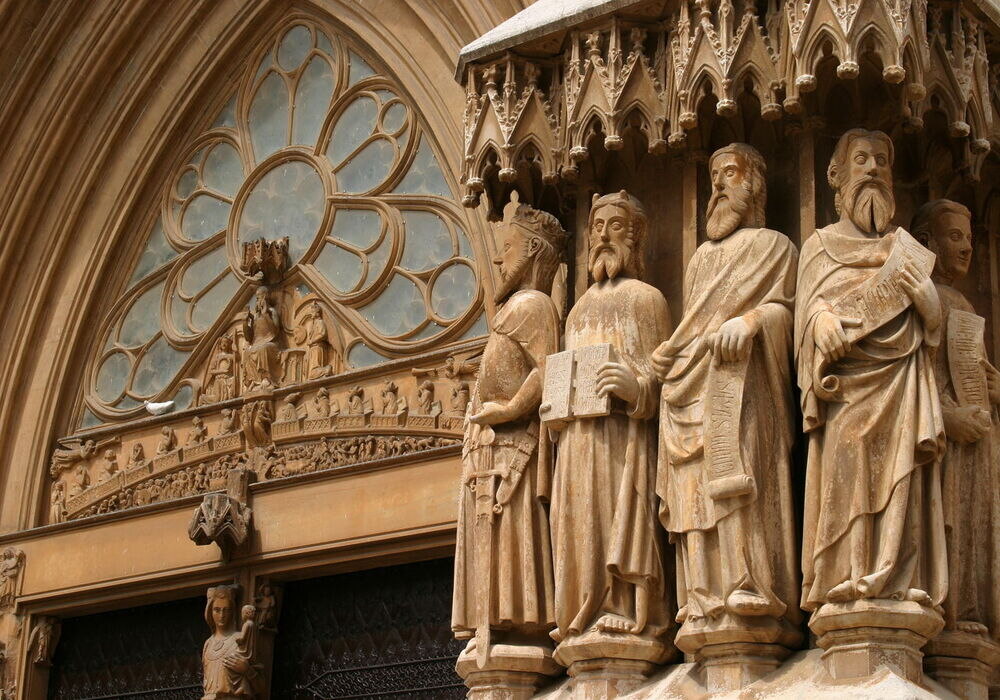
This revolutionary form of design was sown by Abbot Suger, who is also considered the Father of Gothic Architecture by many. Many prominent architects from this era pinned the influence and fabric of Gothic around the world, like Antoni Gaudi, who introduced novel material treatment techniques such as trendcadís (using waste ceramic pieces) and is still remembered for his work on Sagrada Família. Creations of other architects like Edward Brickell White were also noted for his designs in the Gothic revival era, along with Roman and Greek influences. Other prominent architects from the era include Augustus Pugin, Eugène Viollet-le-Duc, Alexander Jackson Davis, Giovanni Antonio Amadeo, Robert de, Richard Poore, Anton Pilgram, etc.
Also Read: Vernacular Architecture: Learning from the past for the future
Prominent Examples of Gothic Architecture:
The Influence of Gothic Revival architecture is strikingly prominent in North America and Great Britain. Many universities in the US, like Princeton University, Yale University, and the University of Pennsylvania have been advocating for this architectural style.
Some famous examples from the Gothic era entail St. Paul's Cathedral in Melbourne (1891), St. Peter's Cathedral in Adelaide (1901) and St. Mary's Cathedral in Sydney (1821-1882).
1. Notre-Dame de Paris, France
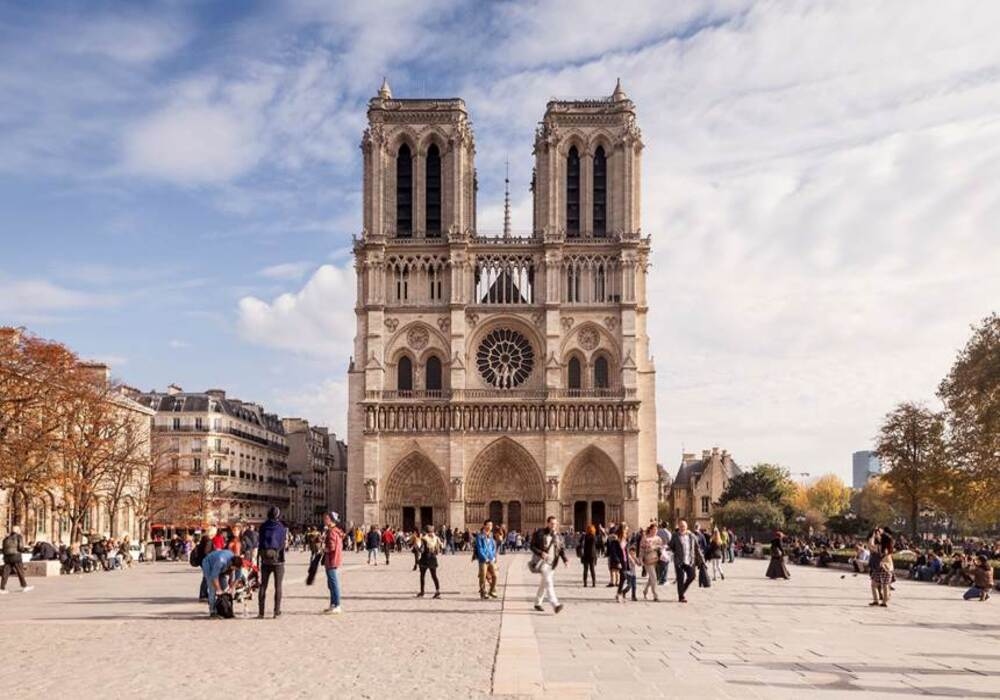
Architect: Pierre de Montreuil (1200 – 1266)
Jean-Baptiste-Antoine Lassus (1807 – 1857)
Year Built: 1163
Trivia about Notre Dame de Paris: Rated as one of the most prestigious and largest churches to exist in France, Notre Dame was designed by Pierre de Montreuil. Additional details/work was designed by Jean-Baptiste-Antoine Lassus.
Notre Dame is a paradigm in French Gothic Architecture that stands distinct and unequivocal. Profused with figurines and sculptures along with decorative and flamboyant rose windows, flying buttresses, bells, organs and vaults make up for the structure's skeleton. Commencing in 1163, the construction of the cathedral concluded in 1345 after undergoing modifications during the reign of Louis XIV and Louis XV. However, the tumultuous French Revolution spawned damage to religious iconography, with the stained glass windows being replaced with geometric motifs as they suffered the altercations of the time.
2. Salisbury Cathedral, United Kingdom
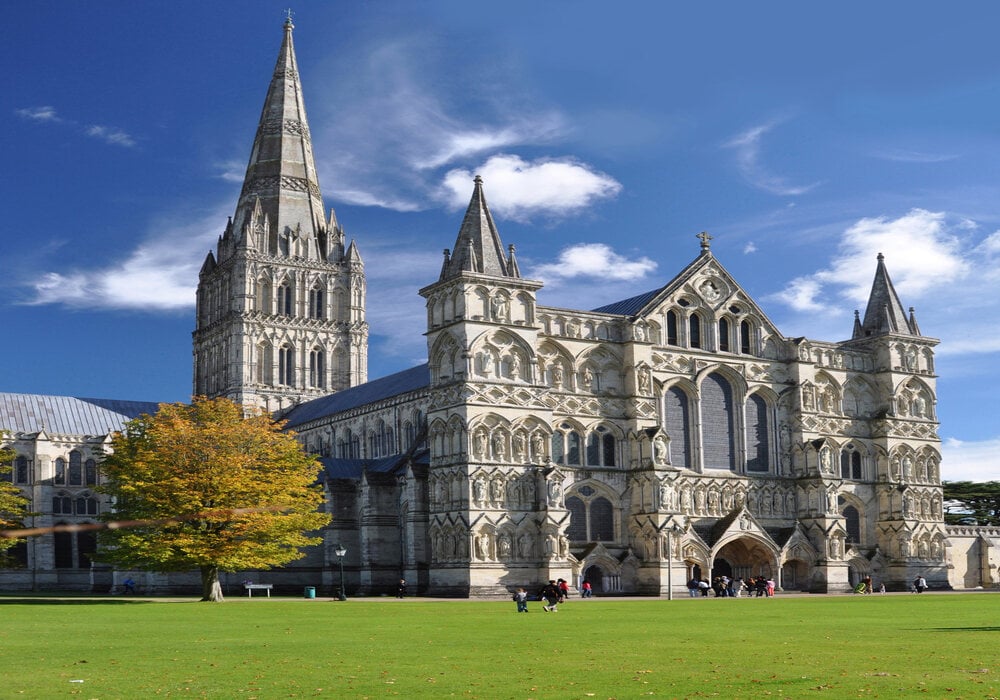
Architect: Richard Poore (c. 1228)
Year Built: 1220
Trivia about Salisbury Cathedral: If you are about to or are planning to visit the Salisbury Cathedral, make sure to take a tour of the hollow spire and keep an eye out for the old wooden scaffolding that it is made out of.
Another magnificence from the books of Gothic era architecture is the Salisbury Cathedral in the United Kingdom, also titled the tallest in the nation since 1561. Constructed between 1220-1258, the cathedral's spire was added in 1320, making it a significant chapter in history. Housing the world's most antiquated working clock, accentuated by a remarkable iron-framed mechanism without a dial, Salisbury Cathedral boasts its colossal fabric along the skyline of Britain. Furthermore, the cathedral accommodates a significant royal charter, that is, one of the four copies of the historic Magna Carta.
3. Santa Maria del Fiore, Italy
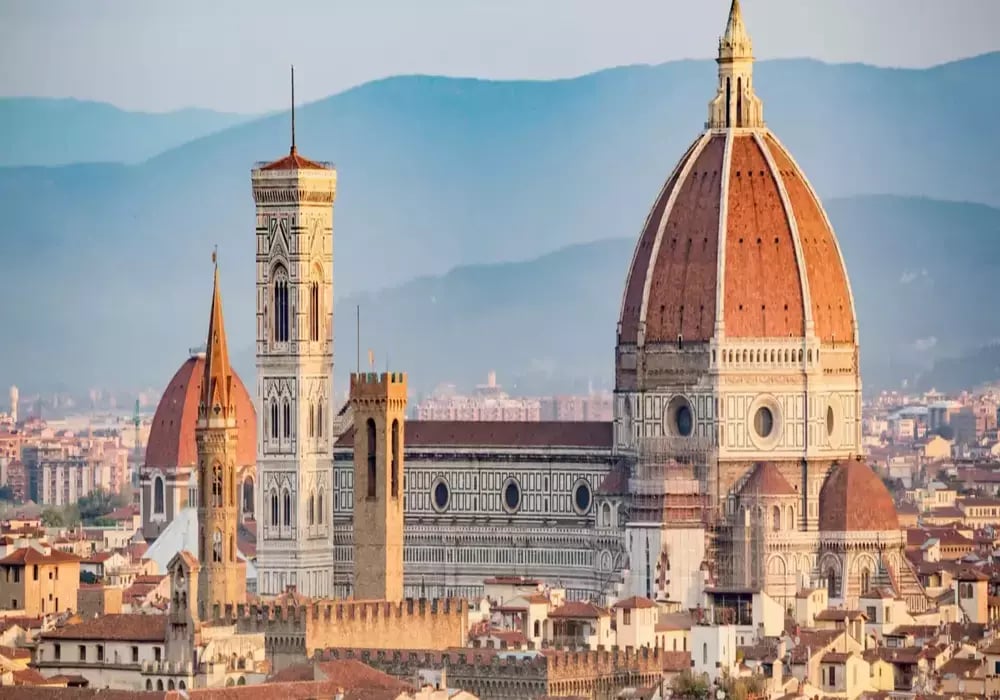
Architect: Arnolfo di Cambio (1232 – 1302)
Year Built: 1296
Trivia about Santa Maria del Fiore: The cathedral’s complex is also inclusive of two other buildings like Giotto’s Campanile and the Baptistry. All three buildings have been listed by UNESCO as a World Heritage Site.
Alternatively referred to as the Florence Cathedral, Santa Maria del Fiore was built from 1296 to 1436 under the vision of Arnolfo di Cambio. This awe-inspiring structure flaunts the Gothic Revival style, with a remarkable facade adorned in polychrome marble featuring hues of green and pink. Distinguished as one of Italy's largest churches, Santa Maria del Fiore boasts a magnificent dome crafted by the ingenious Filippo Brunelleschi, which remains the largest brick dome ever constructed.
4. Milan Cathedral, Italy
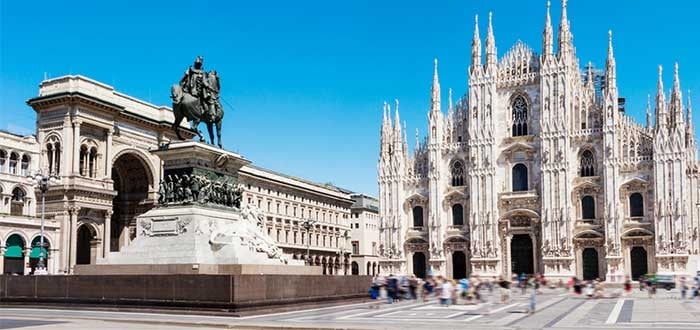
Architect: Donato Bramante (1445 – 1514)
Giovanni Antonio Amadeo (1447 – 1522)
Year Built: 1386
Trivia about Milan Cathedral: While the construction of the cathedral began in 1386 with half of it being completed by 1402, unavailability of funds stood as a major hurdle in the further construction development.
Another excerpt from the reigns of the Gothic era architecture brings us to Milan Cathedral in Italy, which took over 600 years to complete. Designed by Giovanni Antonio Amadeo and Donato Bramante, the construction of this exemplary structure began in 1386.The impact of the annihilation during World War II caused crucial delays in the cathedral's construction, ultimately leading to its conclusion in 1965. Celebrated for its complex pinnacles and spires, the cathedral leaves an aesthetic and structural impact and touches the skyline at the third position.
5. The Basilica of Saint-Denis, France
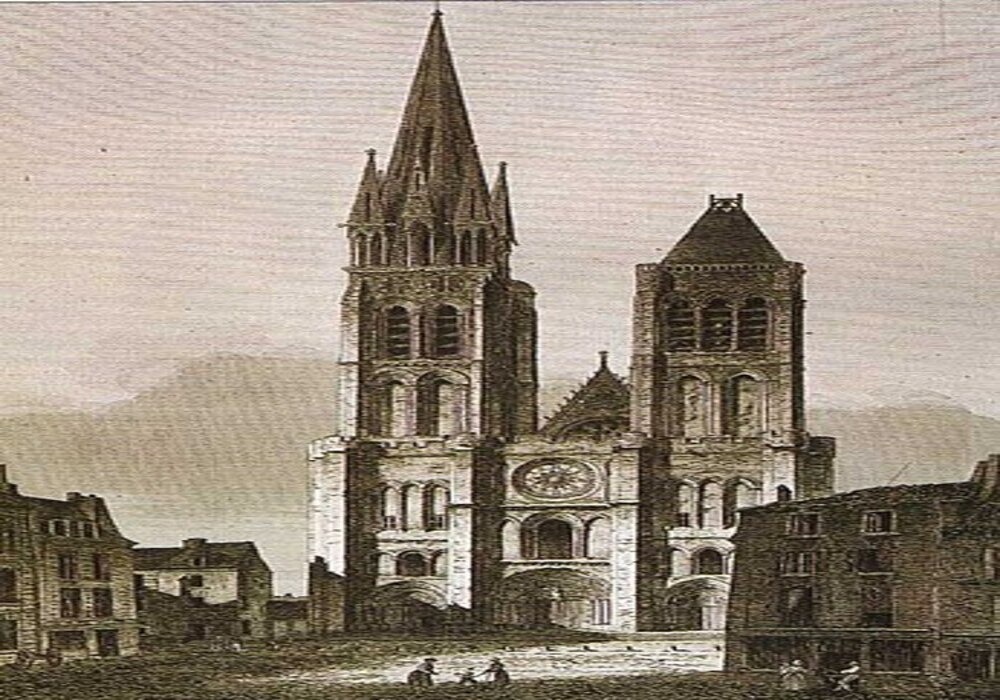
Architect: Abbot Suger (1081 – 1151)
Year Built: 1135
Trivia about the Basilica of Saint-Denis: This cathedral is locally addressed as the seat of the Bishop of Saint-Denis instead of a Basilica. The Vatican is yet to grant the title officially.
A trailblazer in the history of Gothic Architecture, the renowned Saint-Denis Basilica is located in the suburb of Saint-Denis. The structure parades prominent features from the era of Goth that are especially reflected in the choir (completed in 1144). The Basilica still bears the remnants from the Roman cemetery beneath the foundation. The basilica is known for its religious and pilgrimage roots, holding a substantial footfall every year.
6. St. Stephen’s Cathedral, Austria

Architect: Anton Pilgram (1460-1516)
Wenzel Parler (1360-1404)
Year Built: 1578
Trivia about St. Stephen’s Cathedral: The main spire of this cathedral reaches the height of a modern-day skyscraper.
St Stephen's Cathedral is a romantic affair from the styles of Romanesque and Gothic design styles. Featuring an impressive spire that takes over the skyline, this cathedral is celebrated for its kaleidoscopic roof which becomes quite the highlight with the light straining from 230,000 glazed tiles in a zig-zag mosaic pattern. The cathedral also features 18 altars, 22 bells, and a huge stone pulpit that outcries Gothic Architecture.
7. Westminster Abbey, United Kingdom
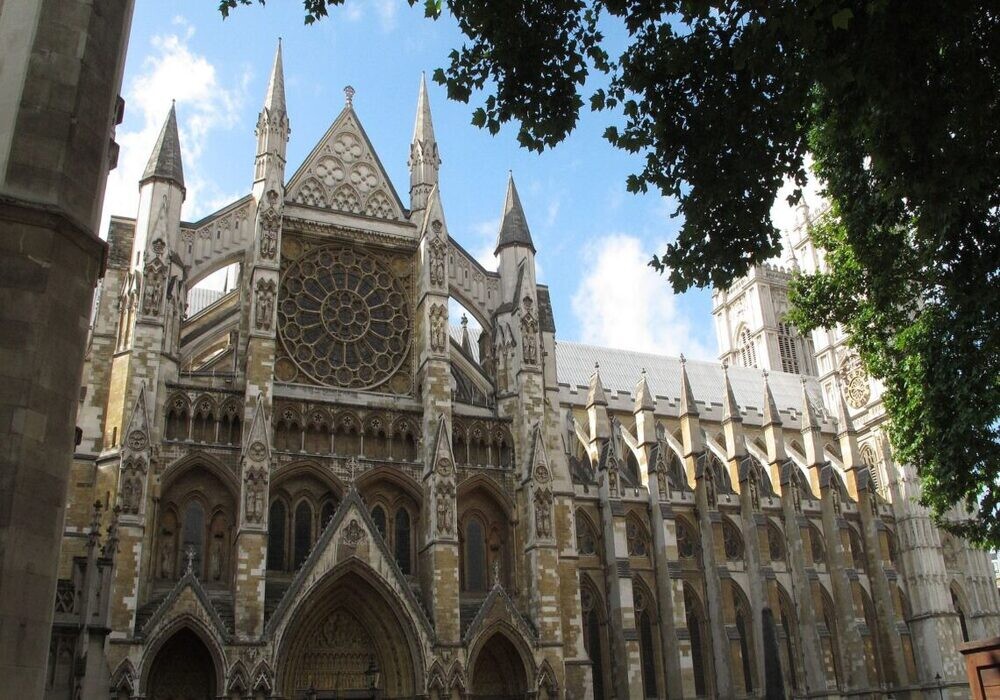
Architect: George Gilbert Scott (1811-1878)
John of Gloucester (1470-1491)
Ptolemy Dean (1968)
Nicholas Hawksmoor (1661-1736)
Henry Yevele (1320-1400)
Edward Blore (1787-1879)
Henry of Reyns (fl. 1243- c. 1253)
Robert of Beverley (fl. 1253-1285)
Year Built: 1269
Trivia about Westminster Abbey: The Westminster Abbey is said to have been the resting place for more than 3500 people.
Crafted under the vision of Henry III, the construction of the Westminster Abbey commenced in 1245. The church was meticulously constructed in an Anglo-French gothic style, conveying the primal features of the design genre. These features include rose windows, pointed arches, ribbed vaults, high ceilings, flying buttresses, and intricate ornamentation.The church has been the channel of faith to every British and English monarch since 1066 and continues to play a religious role in British culture.
8. Amiens Cathedral, France
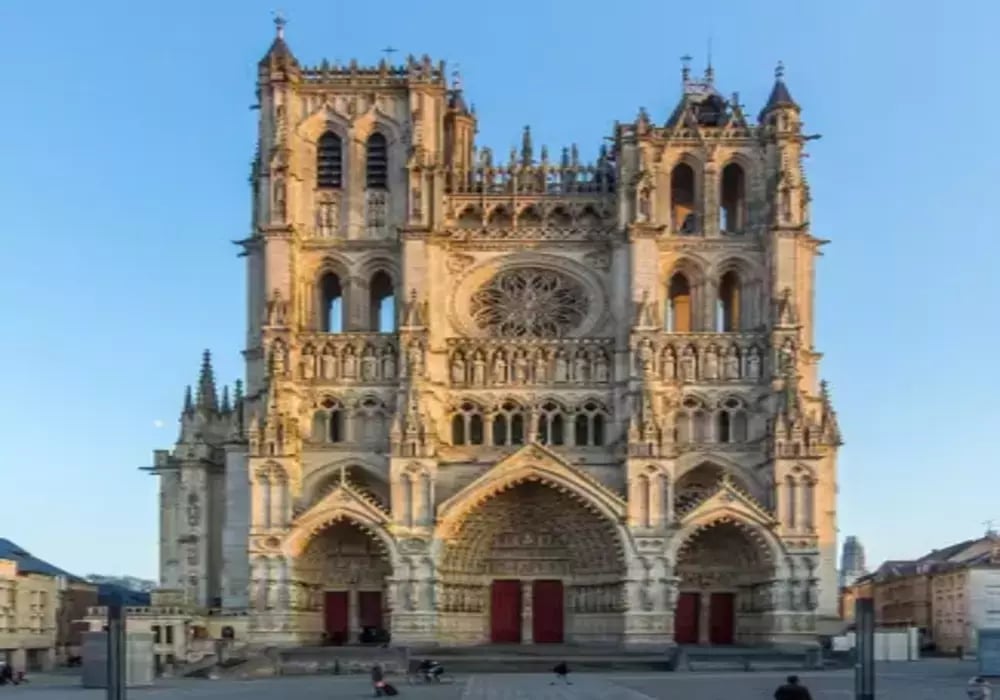
Architect: Robert de Luzarches
Year Built: 1270
Trivia about Amiens Cathedral: Amiens Cathedral or Cathedral Basilica of Our Lady of Amiens is a Roman Catholic church.
Being one of the most pronounced cathedrals from the era of Gothic Architecture, Amiens Cathedral was constructed in a comparatively shorter span of just 50 years. Epitomising the pursuit of colossal scale, the structure has been titled France's largest cathedral that can house two Notre-Dame cathedrals in nonconformity. With the construction beginning in 1220 after a wreck caused by the fire in the earlier Romanesque cathedral, the church is widely known for its detailed facade.
9. Seville Cathedral, Spain
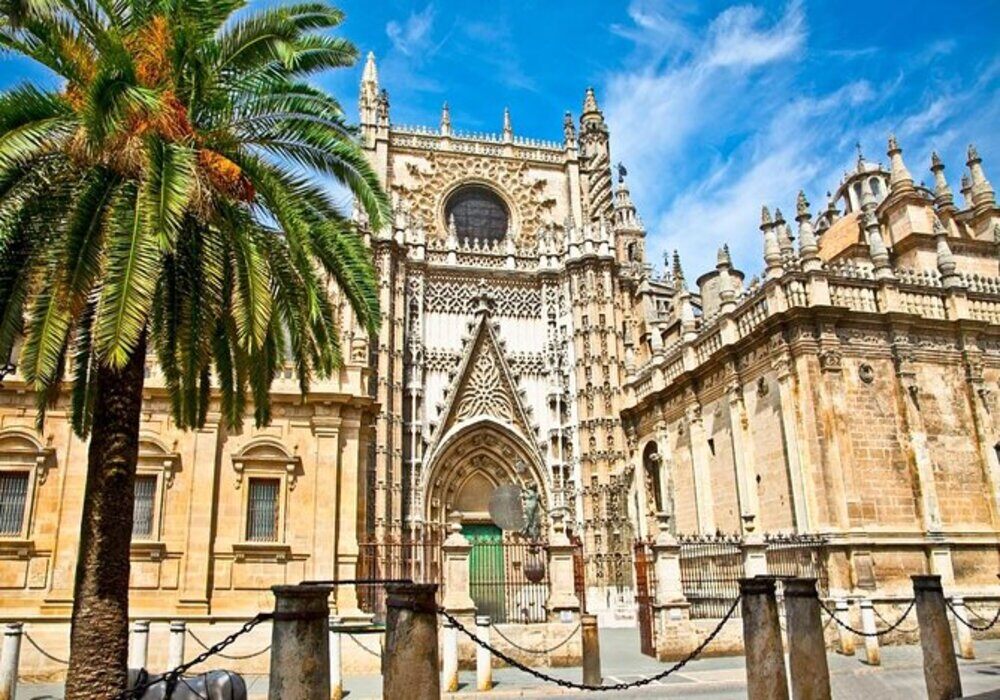
Architects: João de Castilho (1470-1552)
Juan Gil de Hontañón (1480-1526)
Year Built: 1519
Trivia about Seville Cathedral: The original site on which Seville Cathedral is constructed was for a mosque. In the year 1401, the site of the mosque was Christianized and repurposed into a site of a cathedral.
Titled the largest cathedral in the world, the Seville Cathedral bathes in Gothic aesthetics and was completed in the 16th century. Renowned for its grandeur, ornate stonework, and intricate mosque minaret that later functioned as a bell tower, La Giralda. The subtle influences from the Mudejer style kept reflecting from the fabric of the cathedral. This style is a seamless blend of Gothic and Moorish styles and has been used in defining the character.
10. Chartres Cathedral, France
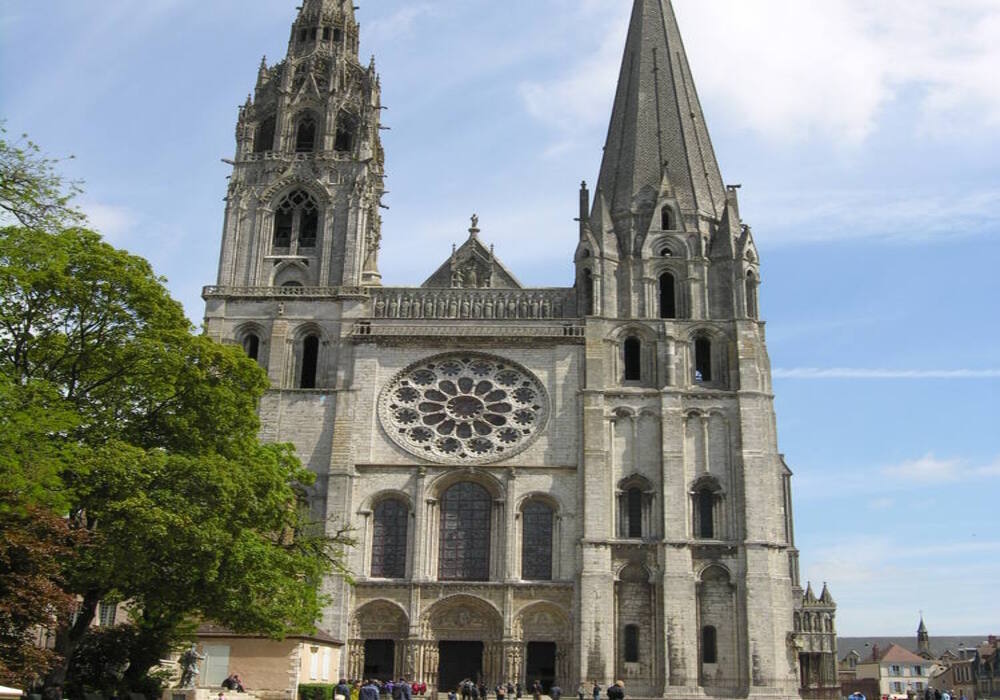
Architect: Master of Chartres (952-970)
Year Built: 1194
Trivia about Chartres Cathedral: This Cathedral was designed as a temple of light and was designed to be an ethereal Gothic building.
Amidst the urban devastation due to fires, the Chartres Cathedral flourished as an engrossing affair from the early and late Gothic characteristics. The spire created in flamboyance was concluded with an ornate tracery and fine sculpting. Three facades of the Cathedral are decked with biblical narratives, with the sculptures being the spokesperson. The cathedral also features a labyrinth in the interiors that dates back to Greek mythology. This was designed by the architect Daedalus for destroying the Minotaur monster who fed on the children of Athens.
Also Read: 10 Fields Using Computational Design Besides Architecture
Conclusion: The Legacy of Gothic Architecture
Make sure to keep a note of visiting these cathedrals once in your lifetime and let them house a corner in your brain. Constructed during the 12th and 16th centuries, the revolution of the Gothic genre influenced numerous mediaeval masterpieces. Defying the laws of gravity with flying buttresses to the rescue, Gothic cathedrals introduced novel concepts and narratives to the evolution of design and architecture. Intertwining pilgrimage and tourism, the era of Gothic architecture turned out to be unconventional.
Well, did you know that buildings like these can be made with complex designs and high efficiency in today’s time with the use of technologies like Computational Design? If you are an architect willing to learn, here’s something that might interest you:
Novatr offers you a Master's Computational Design Course that will help you understand computation in different design fields with industry workflows, and advanced tools for a concrete foundation in computational design. Learn high-performance computational BIM and building analysis via a live industry project. Bag opportunities along with professional certification, endless career possibilities and upskilling.
FAQs
1. What inspired the development of Gothic architecture?
The limitations of Romanesque architecture led to the development of Gothic architecture in the 12th century. Rooted in religious expression, it aimed to create awe-inspiring spaces that reflected divine grandeur.
2. What is the significance of stained glass windows in Gothic cathedrals?
The stained glass windows in Gothic Cathedrals were created to replace the heavy Romanesque wall. They created the illusion of pace. Moreover, the stained glass themed the religious beliefs creating an ethereal atmosphere.
3. How did Gothic architecture influence modern architecture?
Through its innovative structural techniques, emphasis on verticality, and intricate detailing, Gothic architecture influenced modern architecture. It paved the way for taller and sharper buildings.
4. How does Gothic architecture reflect the culture and religion of its time?
Deeply reflecting the religiosity and cultural aspirations of medieval Europe, Gothic architecture embodies the era’s devotion to God and the Church’s central role in society. From towering spires, intricate sculptures, and expansive stained glass windows, the grandeur of Gothic cathedrals sings the song for themselves

 Thanks for connecting!
Thanks for connecting!


.png)



